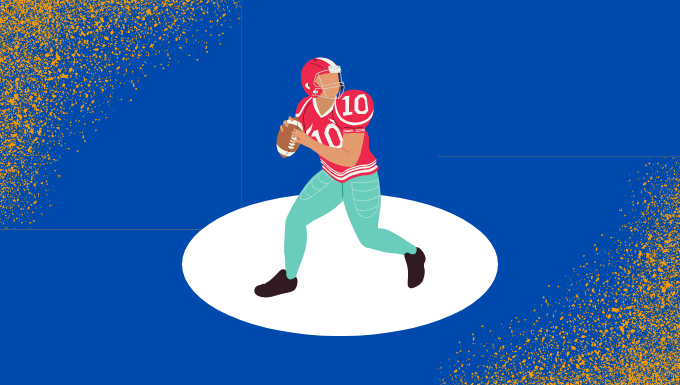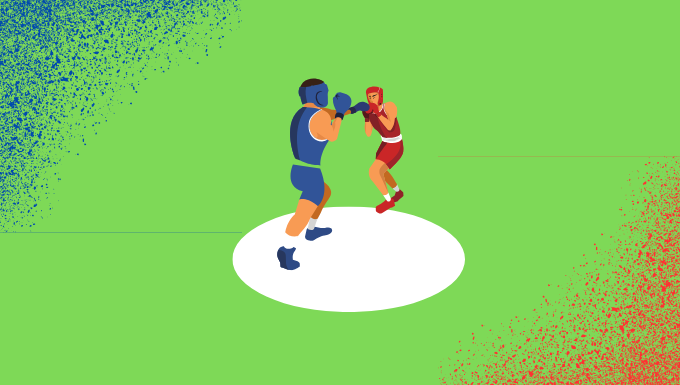The NFL is one of the most popular leagues for betting because of its huge fan base and the sheer number of games each season. The key to long-term success in NFL betting, or at least long-term enjoyment, is to be smart, disciplined, and to understand what you’re betting on. Let’s break it down.

Why Bet on the NFL?
The NFL is immensely popular, with 32 teams playing 17 regular-season games each, plus playoffs and the Super Bowl, there’s always action. Betting can make watching games more fun, but it’s key to approach it with a clear head. A wise bettor treats it like a hobby, not a get-rich-quick scheme. Start small, learn as you go, and enjoy the process.
Understanding Betting Odds in NFL Betting
Odds are the foundation of any bet. In the US, NFL odds are usually shown in American format, which might look confusing at first, but it’s straightforward once you get it.
- Positive Odds (+): These show underdogs. For example, if a team has +150 odds, a $100 bet wins you $150 profit (plus your $100 back, for a total of $250).
- Negative Odds (-): These are for favorites. Say a team is at -200; you’d need to bet $200 to win $100 profit (total payout $300).
To calculate potential payouts, use this simple formula. For positive odds, profit = (odds / 100) × stake. For negative odds, profit = stake / (odds absolute value / 100).
Common Types of NFL Bets
NFL betting offers several options. Here’s a breakdown of the main ones to start with.
Moneyline Bets
This is the simplest: pick who wins the game outright. No points involved. Favorites have negative odds, underdogs positive. For example, if the Chiefs are -150 against the Ravens at +130, betting $150 on Kansas City wins $100 if they win. Easy for beginners, but underdogs can offer big payouts.
Point Spread Bets
Here, you bet on the margin of victory. The spread “levels the field.” If the spread is Chiefs -3.5 vs. Ravens +3.5, the Chiefs must win by more than 3.5 points for your bet to pay out. The Ravens cover if they lose by 3 or fewer, or win. Spreads are usually around -110 odds, meaning a $110 bet wins $100. From my experience, spreads are great for close games where you think one team will dominate.
Over/Under (Totals) Bets
Bet on the combined score of both teams going over or under a set number. If the total is 48.5 for a game, “over” wins if the score is 49 or more; “under” if 48 or less. Weather, injuries, and team styles (like high-scoring offenses) influence this. It’s a good bet if you’re not sure about the winner but have a feel for the pace.
Prop Bets
These are bets on specific events, like a player’s yards, touchdowns, or even coin toss outcomes. For example, “Will Patrick Mahomes throw over 250 yards?” Props add variety and can be fun for focusing on stars. They’re popular during big games like the Super Bowl.
Parlays and Teasers
A parlay combines multiple bets for higher payouts but all must win. For example, parlay a moneyline, spread, and over/under if all hit, you win big, but one loss means you lose. Teasers let you adjust spreads (e.g., +6 points) but with lower odds. These are riskier, so as a new bettor, use them sparingly.
Research and Betting Strategies
Betting smart requires homework. Don’t just bet on your favorite team—look at facts.
- Team Stats: Check recent form, home/away records, and head-to-head history.
- Injuries and News: A key player out can change everything. Follow reliable sources like ESPN or team sites.
- Weather and Venue: Outdoor games in rain or wind affect scoring; domed stadiums are more predictable.
- Line Movement: If odds shift, it might mean sharp bettors (pros) are influencing them. Watch for value where the line doesn’t match your analysis.
Start with a strategy like focusing on underdogs in divisional games or betting unders in primetime matchups. Test on paper first without real money. Over time, you’ll develop your own edge.


